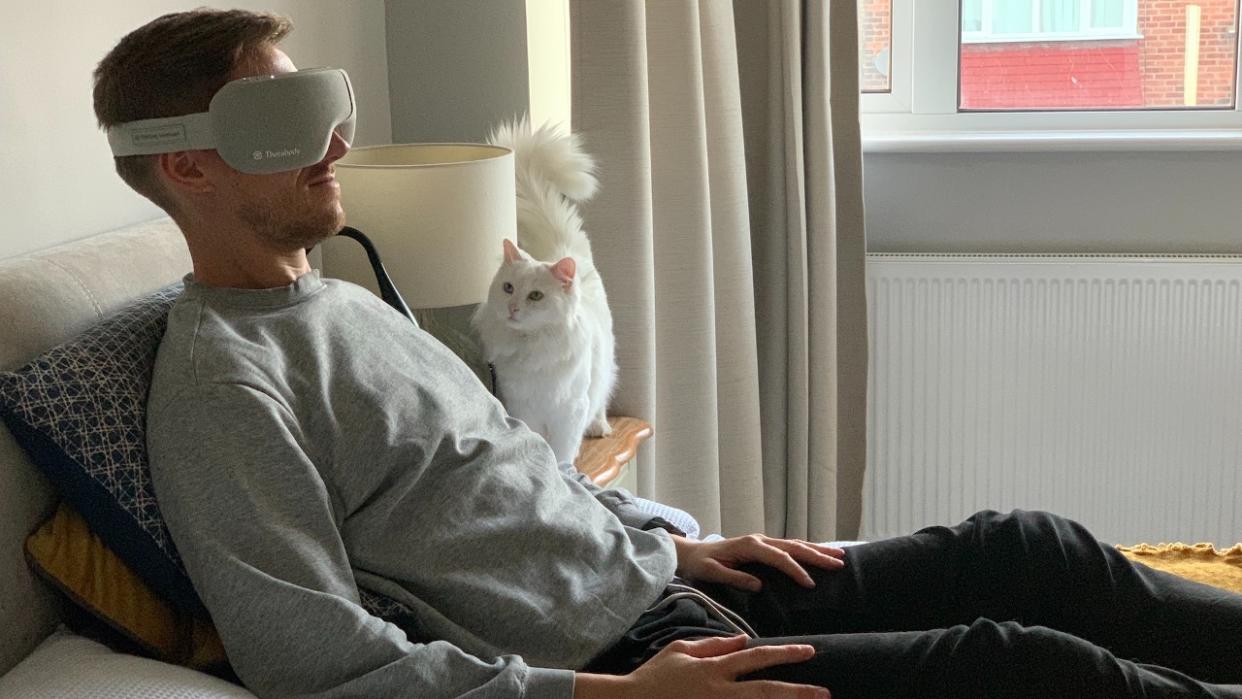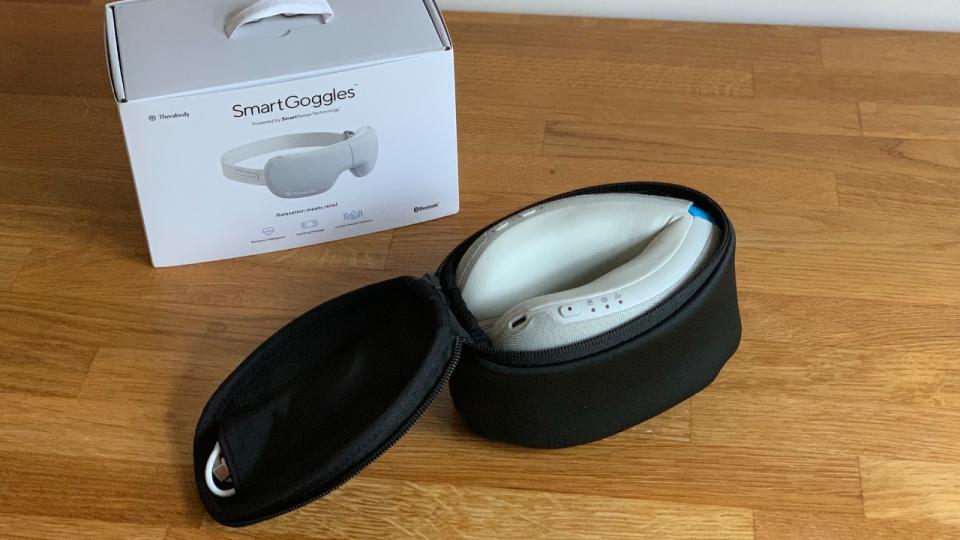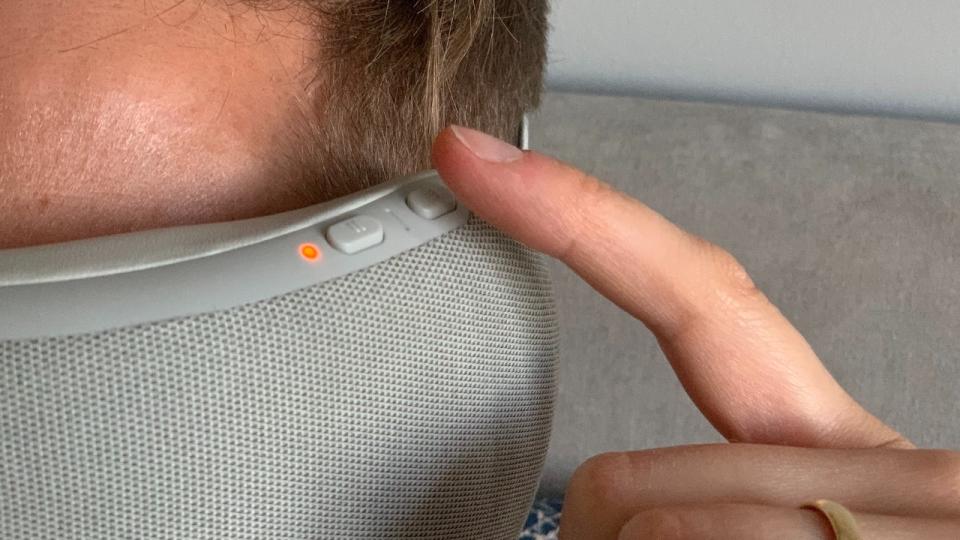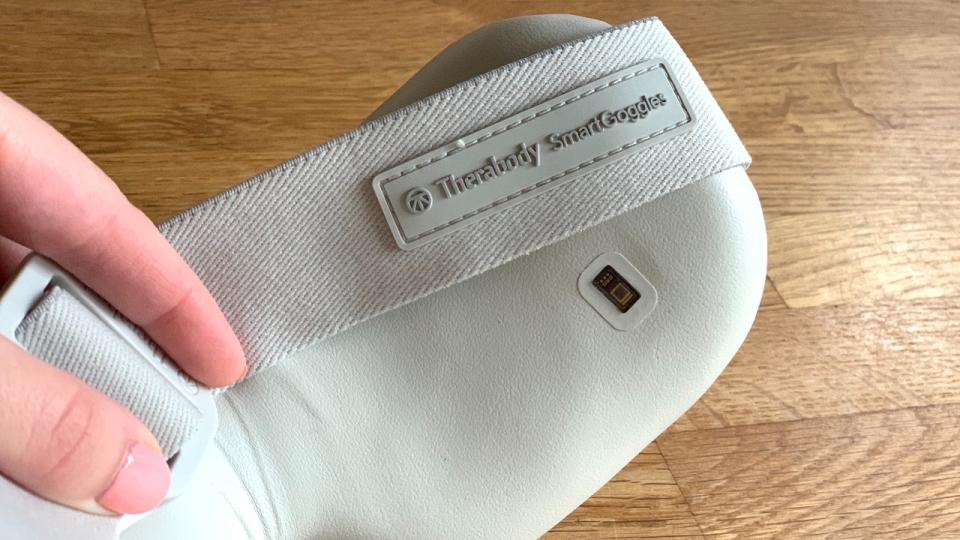I Tried The Therabody SmartGoggles And It Was… Intense

- Oops!Something went wrong.Please try again later.
A pulse-controlled eye mask that helps soothe away headaches and nullify insomnia sounds too good to be true – but if any company can pull it off it’s Therabody. The California-based wellness specialist is responsible for category-defining recovery tools that top Coach’s lists of the best massage guns and best compression boots.
Now the company is focusing its attention on a different type of recovery with its SmartGoggles. Whether you stare at a screen all day, suffer from anxiety or struggle to switch off, Therabody’s new eyewear is designed to ease facial tension, relieve eye strain, decrease headache pain, and relax your body and mind to prepare for sleep.
I received a pair of the Therabody SmartGoggles a week ahead of its UK release on Tuesday 20th September. Here’s what I discovered.
First impressions

On first inspection, Therabody’s SmartGoggles more closely resemble a VR headset than an eye mask. They come neatly folded in a carry case along with a USB-A to USB-C charging cable. They weigh 450g (1lb) – for context, the iPhone 13 Pro weighs 204g.
A wide, adjustable elasticated band ensures a secure fit, whether you’re sitting upright or lying down, and the material on the inside is soft and wipe-clean, useful since it’s designed not to absorb sweat or make-up. They are certainly comfortable, although the padded material doesn’t completely conform to my face, which meant they didn’t block out all external light for me.
Running along the top of the goggles are the device’s controls. On the right side is a power button that’s easy to find and to toggle on and off. Each tap cycles through its three modes: Focus, SmartRelax and Sleep. On the left side are two more buttons to adjust the heat and vibration settings.

When I slipped on the headset and held down the power button, I anticipated a soothing caress akin to a relaxing head massage. Instead, the SmartGoggles felt like a pneumatic vice or blood-pressure cuff wrapped around my face, noisily compressing my cheekbones and eye sockets while rhythmically pulsing vibrations into my frontal lobe.
It’s meant to be soothing, but at one point the Oberyn Martell eye-gouging scene from Game Of Thrones flashes across my mind. A tad dramatic, perhaps, but the mechanical constriction and robotic strength of the device combined for a rather unsettling first impression.
Notable features
Smart sleeping goggles – or, more accurately, smart eye masks – aren’t an entirely new category. Other models include versions designed to offer precise light control, sound muting or air pressure to target acupoints that help relieve headaches and eye strain, while some have built-in speakers or prioritise comfort over tech, using 3D memory sponge eyecups.
The Therabody SmartGoggles add one feature that’s exclusive within the category: an integrated biometric sensor, half the size of a postage stamp, sits inside the eye mask. Resting against the temple when worn, it measures your pulse to tailor the levels of vibration, massage and heat accordingly.

Supposedly, this is “scientifically proven to slow your heart rate”. To test this theory, Therabody provided me with a six-minute guided audio meditation to use with the SmartGoggles.
“I invite you to find a comfortable position,” the recording begins, played through my wireless earphones as the goggles pressed and pulsed against my temples. “Now feel your attention expand and gently rest behind your eyes,” a woman’s calming voice continues.
The audio journey goes on to describe a golden liquid, “the consistency of honey without being sticky, that’s warm and soothing”, flowing down from the centre of my head, through my body and to my feet. The relaxing backing music, a bit like a gong bath, helps mask the whirring of the goggles’ machinery.
As a result, I was able to enjoy, rather than just endure, the massaging effect this time and, dare I say it, see the benefit of this complicated contraption. I am, however, still unsure about the application of heat. In the past, a cold compress is the only remedy for an oncoming migraine that’s worked for me, so unless I’m suffering from a bad bout of brain freeze, I can’t really see the point.
Added extra
As this audio meditation demonstrated, the SmartGoggles are designed to be used in conjunction with TheraMind, described by Therabody as a science-backed “multisensory sound therapy experience”.
TheraMind sits within Therabody’s excellent app, which can communicate with Therabody devices over Bluetooth. However, TheraMind wasn’t up and running pre-launch when I was initially reviewing the product, which resulted in a rather disjointed experience.
Without clear guidance on exactly how to use the device, it’s hard to tell if you’re doing yourself any good, something they have in common with high-powered massage guns. For that reason, I hung on to the SmartGoggles for an extra week after launch to test them using TheraMind.
The addition of the app does improve the overall user experience, but the difference is marginal. At the time of writing, Therabody has released 18 guided routines, ranging in length from a five-minute “Bedtime Breathing Ritual” to a 25-minute “White Noise” track.
Along with these guided routines, the app offers three preset modes to use in relation with the device: SmartRelax, Focus and Sleep. Before slipping on the goggles, you can set the heat level, vibration setting and time for your session – handy if you’re likely to nod off while wearing them.
When I try one of these Bluetooth-controlled SmartRelax routines, I’m pleasantly surprised – at first. The gentle massage between the eyes, the slow-wave vibrations around the temple and TheraMind’s soothing audio tracks certainly elicit a calming sensation.
But, alas, this feeling is short-lived. Before long, the goggles’ grinding pressure and heat kick in again, bursting the soothing bubble I was enjoying.
Changing tack, I try a six-minute guided Focus routine called “Be Strong with Bo Horvat”, an NHL ice hockey player and captain of the Vancouver Canucks. “When we practise mindfulness so much it becomes a habit, that’s when we find out how powerful we truly are,” narrates Horvat, while instructing me to slow my breathing and visualise success.
On completing the six-minute routine, the app’s dashboard displays my average heart rate for the session, tracked by the goggles’ biometric sensor. At the start, my pulse read 58 beats per minute, and dropped to 52bpm by the end.
Whether the device’s vibration, massage and heat adjusted in direct relation to my pulse is hard to tell, but this at least hints at a way Therabody could hold the edge over its smart eye-mask rivals in the future.
Verdict
After a few days retesting the SmartGoggles in conjunction with TheraMind, I’m still unconvinced. Audio routines provide a welcome distraction from the mechanical whirring of the device, but they can’t make its overbearing compression or heat any less unsettling.
I’m left with the same conclusion: Therabody’s new SmartGoggles are a clever concept, poorly executed. Its application of heat is too intense, its vibration too vigorous and its massage too aggressive.
If the company can dial down these features and prove its biometric sensors can genuinely harness the user’s pulse to provide a tailored relaxation experience, then they might be on to something.
Until then, I expect the SmartGoggles to divide opinion. Some will love them, many won’t. The idea of an eye mask that delivers the psychological benefits of meditation, helps relieve eye strain, improves sleep quality and primes the mind for activity is appealing, but I’m left with the impression that these SmartGoggles are more likely to give me a headache than cure me of one.

